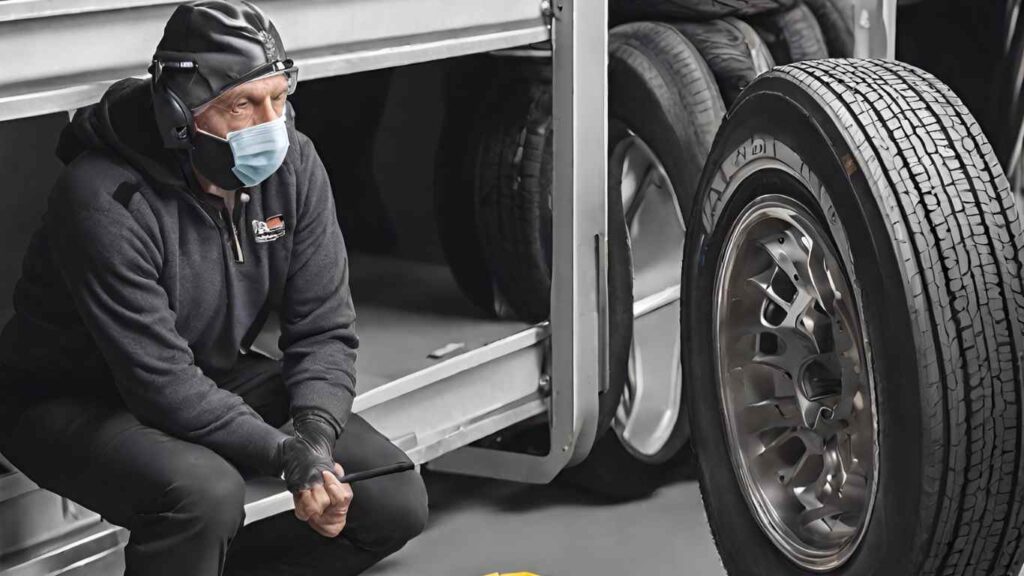The main differences between 4 ply and 6 ply tires primarily lie in their construction, durability, and load capacity.
Thickness and resistance also signify notable differences, with 6 ply being superior in these aspects.
In more depth, 4 ply tires typically have a lighter design offering smoother rides for small vehicles, whereas 6 ply tires have a sturdier build for greater loads, beneficial for heavier vehicles.
Balance, traction, and strength increase, contributing to an overall improved performance with 6 ply tires.
Continuing our discussion of tire properties, I shall distinguish other subtle differences between these two types of tires.
Are 6 ply tires good for off-road?
The difference between 4 ply and 6 ply tires is mainly in their strength and durability, with 6 ply tires being stronger and better suited for heavy loads or rough terrain.

4 Ply Vs 6 Ply Tires: An Overview
I made the following comparison table between 4-ply and 6-ply tires based on general information.
The specific characteristics and performance can vary based on the tire brand, type, and intended use.
| Feature | 4-Ply Tires | 6-Ply Tires |
| Strength | Generally less robust | More robust and durable |
| Load Capacity | Lower load-carrying capacity | Higher load-carrying capacity |
| Durability | Moderate durability | Increased durability |
| Puncture Resistance | Lesser resistance to punctures | Better resistance to punctures |
| Weight | Lighter | Heavier |
| Comfort | Offers a smoother ride | May be slightly firmer |
Detailed Differences Between 4 Ply And 6 Ply Tires
The detailed points will give you more info about how they are different from one another.
Strength
So, 4-ply tires are kind of like the lightweight champs, not exactly heavyweight contenders.
On the other hand, 6-ply tires are the muscle cars of the tire world – robust and built to handle a bit more rough and tumble.
Load Capacity
Think of it like this: 4-ply tires are more like the friend who helps you move your smaller furniture.
They can carry a decent load, but 6-ply tires? They’re the ones you call when you’ve got that giant sofa that feels like it weighs a ton.
So, the 6-ply has more load-taking capability.
The ply rating used to be a numerical value indicating the tire’s load-carrying capacity. For example, a 4-ply tire was designed to carry a certain load, while a 6-ply tire could handle a heavier load.
Durability
Picture 4-ply tires as the reliable buddy who’s up for regular adventures. But when you’re talking 6-ply tires, you’re stepping into superhero territory.
They’re built tough and can take on a lot more without breaking a sweat.
Puncture Resistance
4-ply tires are a bit like regular sneakers – they might feel a sting if you step on a sharp rock. Now, 6-ply tires?
They’re like those heavy-duty work boots that keep your feet safe even in a construction zone. Less drama with punctures.
Weight
4-ply tires are the featherweights – easy on the scales. But if you’re into something more substantial, 6-ply tires are your heavyweights.
They bring some extra muscle to the party.
Comfort
Imagine cruising down the road on a sunny day. That’s the feel of 4-ply tires – smooth and easy.
Now, 6-ply tires might give you a bit more of a sturdy, firm handshake. They’re not rough, but you might notice a bit more presence.
Remember, it’s like choosing between a comfy sedan and a sturdy SUV – both have their perks, just depends on what kind of road trip you’re planning.
Which One Is Good For What Type Of Vehicle?
4-ply tires are cool for everyday rides, like your regular car. But if you’re dealing with a bigger vehicle, hauling stuff, or off-roading, go for the 6-ply tires.
They’re the tougher option for heavier duties.
You can also think of it this way: 4-ply tires are like your daily drivers, perfect for regular cars and lighter rides. They’re your go-to for smooth rides around town.
Now, if you’re rolling with a big truck, hauling gear, or hitting off-road trails, lean into those 6-ply tires. Heavy loads and more adventurous adventures are no problem for these tough buddies.
So, for your chill city cruises, 4-ply is your pal, but when you’re gearing up for some heavy-duty action, those 6-ply tires are the partners in crime you want on your side.
Can You Use 4 Ply And 6 Ply Tires Interchangeably?
Technically, you can swap between 4-ply and 6-ply tires, but it’s not ideal.
If your vehicle is designed for 4-ply, going to 6-ply might make it ride a bit rougher than you’d like.
On the flip side, if your vehicle needs the sturdiness of 6-ply and you toss on 4-ply, you might compromise on load capacity and durability.
It’s like wearing sneakers for a hike – it could work, but hiking boots are built for the job. Stick to what your vehicle recommends for the best performance.
Which Is Better 6 Ply Or 4 Ply Tires?: Is 6 ply better than 4?
There is no better or bad. The choice between 6-ply and 4-ply tires depends on your specific needs. If you’re driving a regular car for daily commuting and light use, 4-ply tires are often sufficient, providing a smoother ride.
Are 6 ply tires good for off road?
On the other hand, if you have a larger vehicle, carry heavy loads, tow trailers, or venture off-road, 6-ply tires are generally better. They offer increased durability, higher load-carrying capacity, and better puncture resistance.
It’s not about one being inherently better; it’s about choosing the right tool for the job.
Consider your driving conditions and vehicle requirements before making a decision.
Bye mates!
Check our Othersr PLY comparison below.
